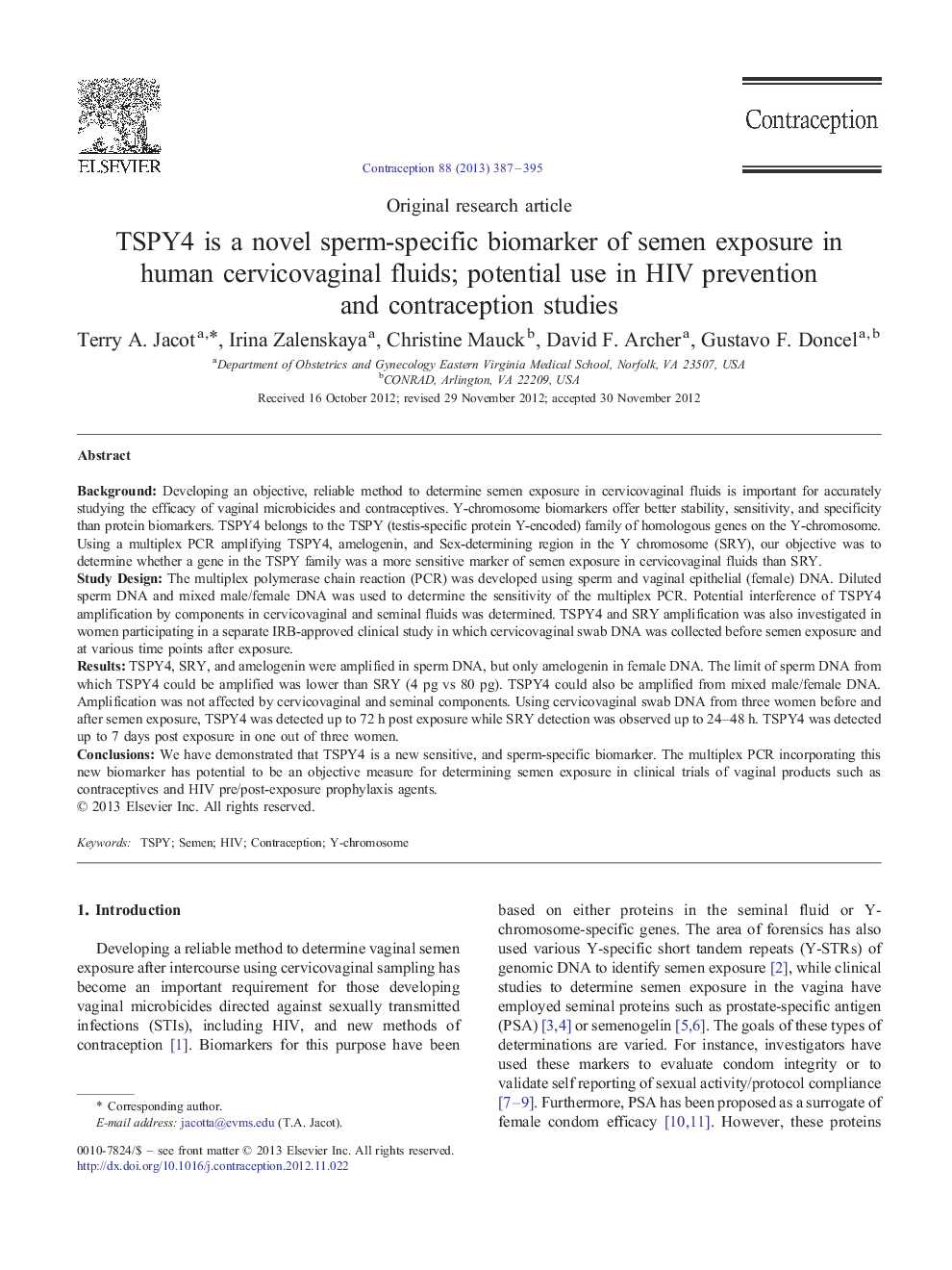| کد مقاله | کد نشریه | سال انتشار | مقاله انگلیسی | نسخه تمام متن |
|---|---|---|---|---|
| 3913316 | 1251436 | 2013 | 9 صفحه PDF | دانلود رایگان |

BackgroundDeveloping an objective, reliable method to determine semen exposure in cervicovaginal fluids is important for accurately studying the efficacy of vaginal microbicides and contraceptives. Y-chromosome biomarkers offer better stability, sensitivity, and specificity than protein biomarkers. TSPY4 belongs to the TSPY (testis-specific protein Y-encoded) family of homologous genes on the Y-chromosome. Using a multiplex PCR amplifying TSPY4, amelogenin, and Sex-determining region in the Y chromosome (SRY), our objective was to determine whether a gene in the TSPY family was a more sensitive marker of semen exposure in cervicovaginal fluids than SRY.Study DesignThe multiplex polymerase chain reaction (PCR) was developed using sperm and vaginal epithelial (female) DNA. Diluted sperm DNA and mixed male/female DNA was used to determine the sensitivity of the multiplex PCR. Potential interference of TSPY4 amplification by components in cervicovaginal and seminal fluids was determined. TSPY4 and SRY amplification was also investigated in women participating in a separate IRB-approved clinical study in which cervicovaginal swab DNA was collected before semen exposure and at various time points after exposure.ResultsTSPY4, SRY, and amelogenin were amplified in sperm DNA, but only amelogenin in female DNA. The limit of sperm DNA from which TSPY4 could be amplified was lower than SRY (4 pg vs 80 pg). TSPY4 could also be amplified from mixed male/female DNA. Amplification was not affected by cervicovaginal and seminal components. Using cervicovaginal swab DNA from three women before and after semen exposure, TSPY4 was detected up to 72 h post exposure while SRY detection was observed up to 24–48 h. TSPY4 was detected up to 7 days post exposure in one out of three women.ConclusionsWe have demonstrated that TSPY4 is a new sensitive, and sperm-specific biomarker. The multiplex PCR incorporating this new biomarker has potential to be an objective measure for determining semen exposure in clinical trials of vaginal products such as contraceptives and HIV pre/post-exposure prophylaxis agents.
Journal: Contraception - Volume 88, Issue 3, September 2013, Pages 387–395